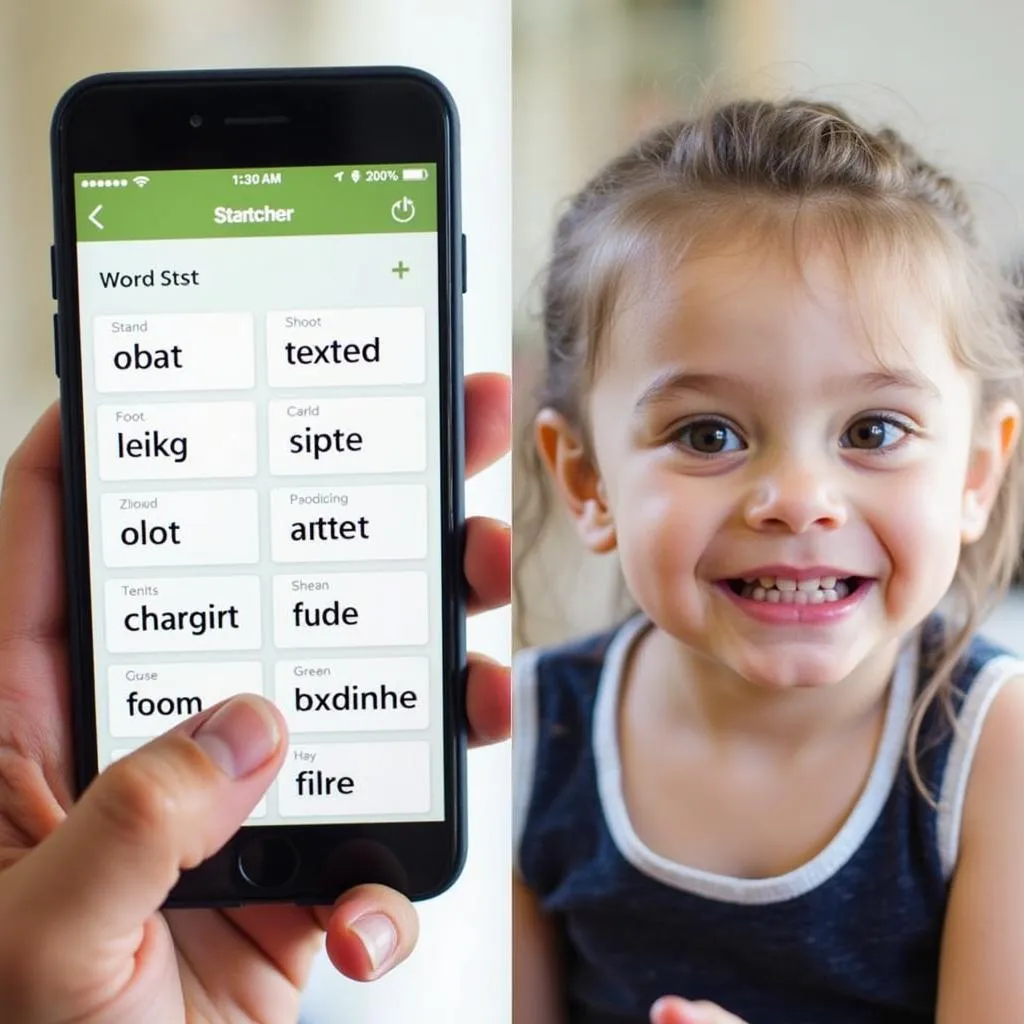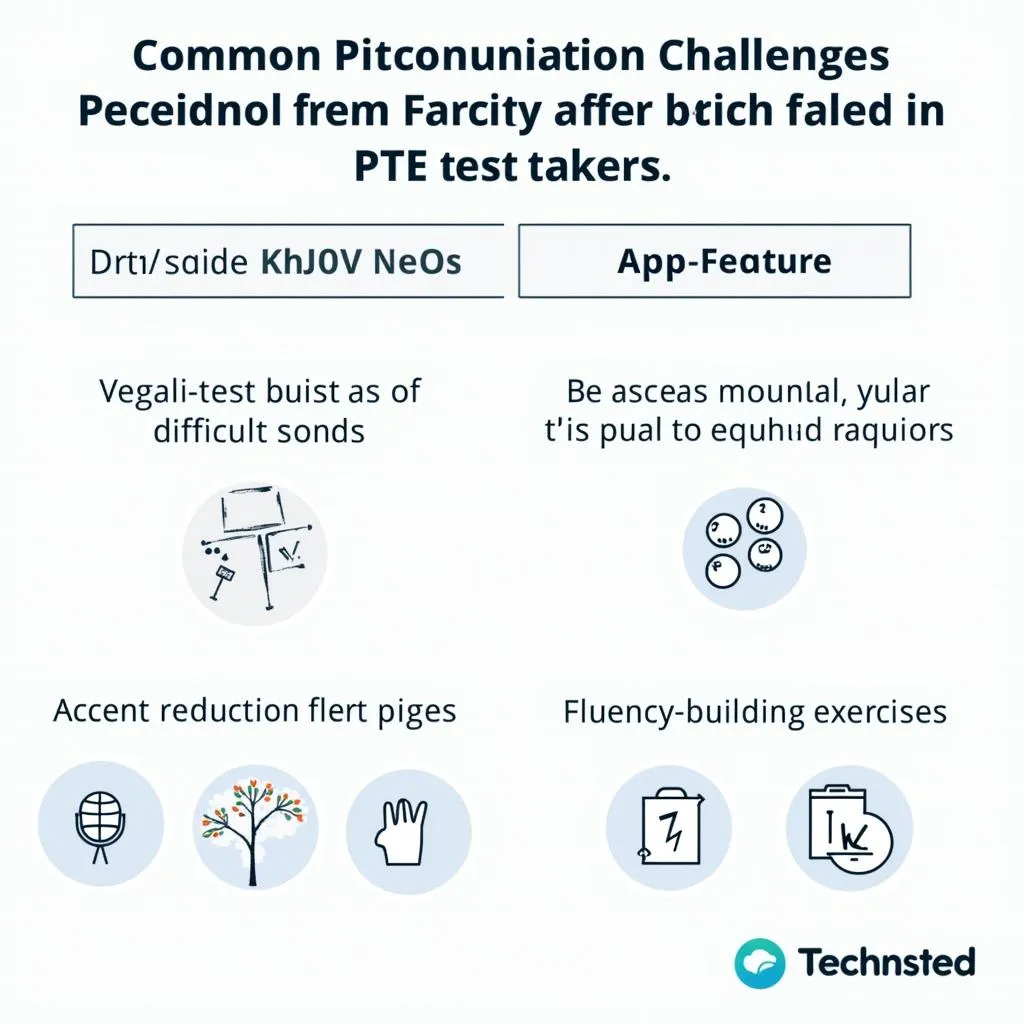Improving your pronunciation is crucial for success in the PTE Academic test. With the right apps, you can enhance your speaking skills and boost your confidence. This guide will walk you through effective strategies to practice pronunciation using PTE apps, helping you achieve your desired score.
Understanding the Importance of Pronunciation in PTE
Pronunciation plays a vital role in the PTE Academic test, directly impacting your speaking and listening scores. Good pronunciation not only helps you communicate clearly but also demonstrates your language proficiency to the examiners.
 Importance of Pronunciation in PTE
Importance of Pronunciation in PTE
Choosing the Right PTE App for Pronunciation Practice
Selecting the appropriate app is crucial for effective pronunciation practice. Here are some factors to consider:
- Speech recognition technology
- Pronunciation feedback
- PTE-specific content
- User-friendly interface
- Progress tracking features
For a comprehensive list of recommended apps, check out our PTE practice test app recommendations.
Key Features to Look for in PTE Pronunciation Apps
When choosing a PTE app for pronunciation practice, focus on these essential features:
- Real-time feedback
- IPA (International Phonetic Alphabet) support
- Native speaker audio samples
- Recording and playback functionality
- Personalized learning paths
Dr. Emma Thompson, a renowned PTE expert, emphasizes, “The best pronunciation apps provide immediate, actionable feedback that allows learners to identify and correct their mistakes quickly.”
Effective Strategies for Using PTE Apps to Improve Pronunciation
1. Start with Individual Sounds
Begin by mastering individual phonemes:
- Focus on vowel and consonant sounds specific to English
- Practice minimal pairs to distinguish similar sounds
- Use the app’s audio samples to perfect your articulation
2. Move on to Word Stress and Intonation
Once you’re comfortable with individual sounds, concentrate on:
- Word stress patterns
- Sentence intonation
- Rhythm and cadence of spoken English
 Practicing Word Stress with PTE App
Practicing Word Stress with PTE App
3. Utilize Recording and Playback Features
Make the most of your app’s recording capabilities:
- Record yourself speaking
- Compare your pronunciation to native speaker samples
- Identify areas for improvement
- Re-record and track your progress over time
4. Engage in Shadowing Exercises
Shadowing is an effective technique to improve pronunciation:
- Listen to native speaker recordings in the app
- Repeat the speech simultaneously, mimicking the speaker’s rhythm and intonation
- Focus on matching the speaker’s pace and stress patterns
5. Practice with PTE-Specific Content
To maximize your test preparation:
- Use apps that offer PTE-style questions and prompts
- Practice with timed exercises to simulate test conditions
- Focus on common PTE speaking tasks like Read Aloud and Repeat Sentence
For more strategies to enhance your overall performance, explore our guide on how to improve oral fluency for PTE.
Integrating Pronunciation Practice into Your Daily Routine
Consistency is key when improving pronunciation. Here’s how to make it a habit:
- Set aside dedicated practice time each day
- Use your commute or breaks to practice with the app
- Create pronunciation challenges with friends or study groups
- Reward yourself for meeting practice goals
“Regular, focused practice is the secret to pronunciation improvement,” says Mark Johnson, PTE Speaking Coach. “Even 15 minutes a day can lead to significant progress over time.”
Overcoming Common Pronunciation Challenges with PTE Apps
Many learners face similar hurdles when working on their pronunciation. Here’s how to address them:
- Difficult sounds: Use apps with targeted exercises for problematic phonemes
- Accent reduction: Focus on neutral accent samples provided by the app
- Speed and fluency: Practice with timed exercises to improve your pace
Remember, improving your pronunciation also contributes to better spelling. For tips on enhancing your spelling accuracy, visit our guide on how to improve spelling accuracy for PTE.
 Overcoming Pronunciation Challenges
Overcoming Pronunciation Challenges
Measuring Your Progress
Tracking your improvement is crucial for staying motivated:
- Use the app’s progress tracking features
- Take regular self-assessments
- Seek feedback from native speakers or tutors
- Compare your current recordings with earlier ones
Combining App Practice with Other Pronunciation Techniques
While PTE apps are powerful tools, combining them with other methods can accelerate your progress:
- Watch English movies and TV shows with subtitles
- Listen to podcasts and audiobooks
- Practice tongue twisters
- Join language exchange groups or conversation clubs
For a holistic approach to PTE preparation, including stress management techniques, check out our article on how to use stress management techniques for PTE.
Conclusion
Practicing pronunciation with PTE apps is an effective way to enhance your speaking skills and boost your test performance. By choosing the right app, following a consistent practice routine, and integrating various techniques, you can significantly improve your pronunciation and approach the PTE Academic test with confidence. Remember, the key to success lies in regular practice and a willingness to learn from your mistakes. Start your pronunciation journey today and watch your PTE scores soar!
FAQ
-
How often should I practice pronunciation with PTE apps?
Aim for daily practice sessions of at least 15-30 minutes for optimal results. -
Can PTE apps completely replace human tutors for pronunciation practice?
While apps are excellent tools, they work best when combined with feedback from human tutors or native speakers. -
How long does it typically take to see improvement in pronunciation using PTE apps?
With consistent practice, you may notice improvements within 2-4 weeks, but significant changes can take several months. -
Are free PTE pronunciation apps effective, or should I invest in paid versions?
Free apps can be helpful, but paid versions often offer more comprehensive features and PTE-specific content. -
How can I stay motivated when practicing pronunciation with PTE apps?
Set realistic goals, track your progress, and reward yourself for achieving milestones to maintain motivation. -
Can practicing with PTE pronunciation apps help with other language skills?
Yes, improving pronunciation often enhances listening skills and overall language comprehension. -
What should I do if I’m not seeing improvement despite using PTE pronunciation apps regularly?
Consider seeking feedback from a language expert, trying different apps, or adjusting your practice techniques to find what works best for you.